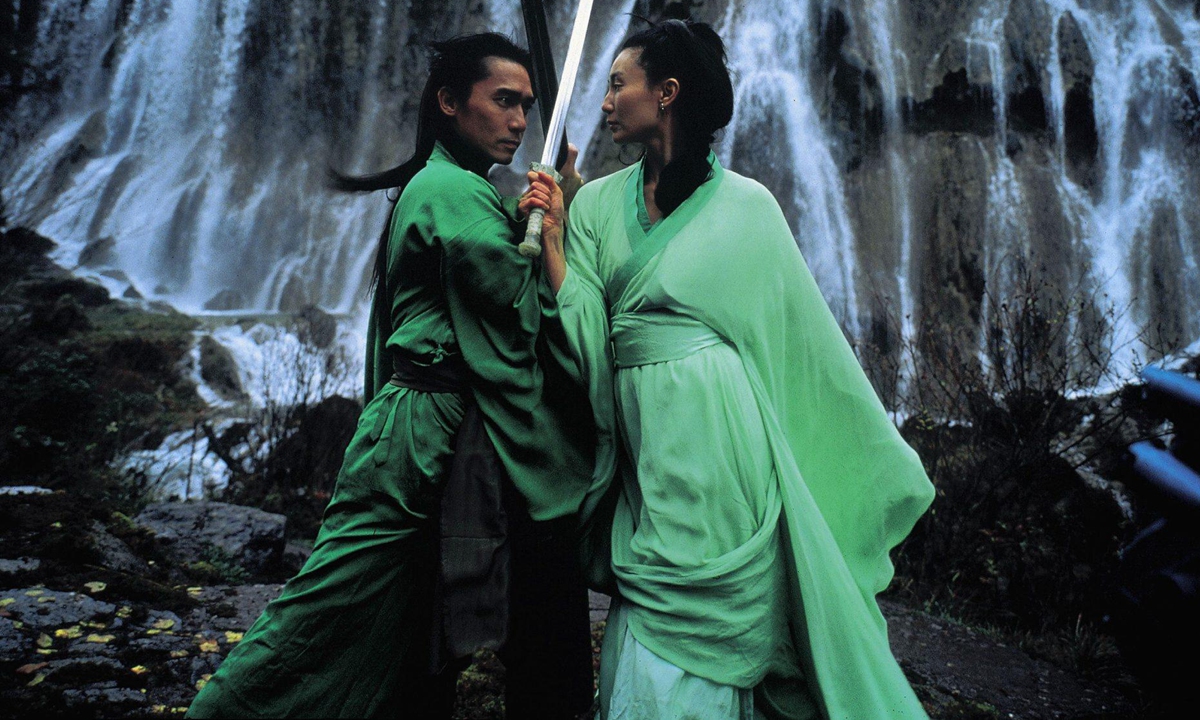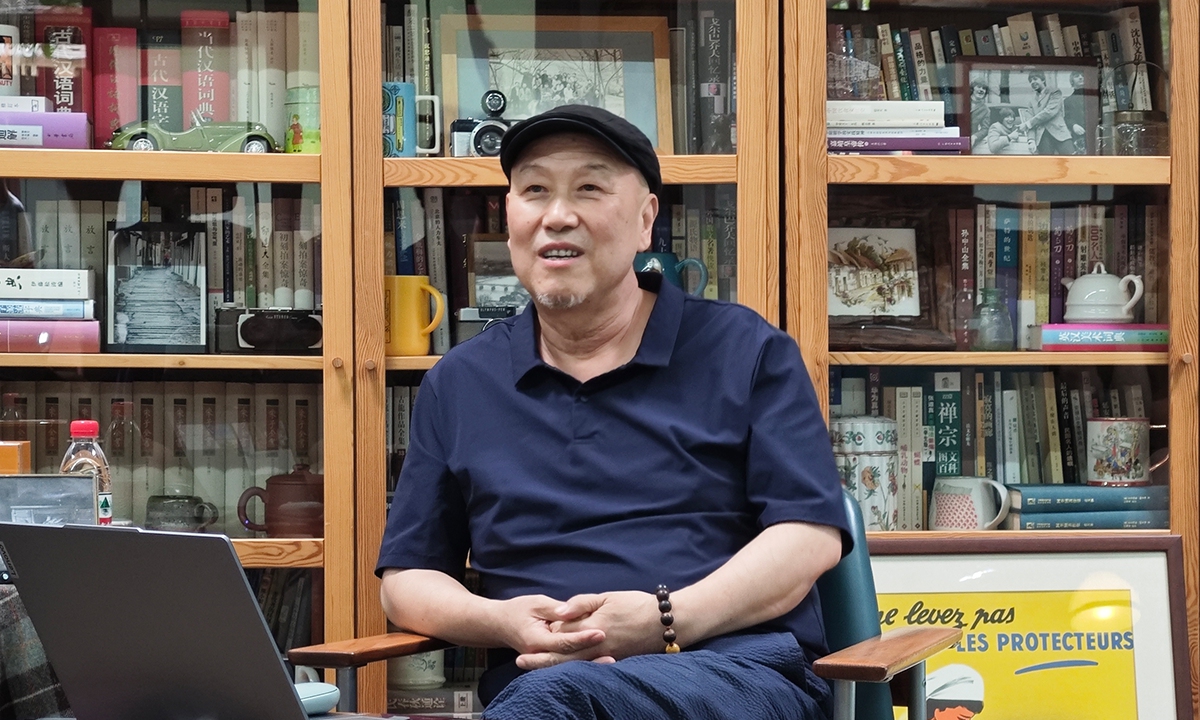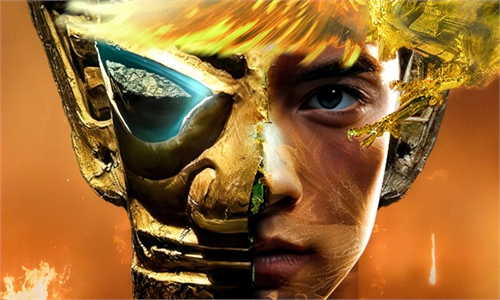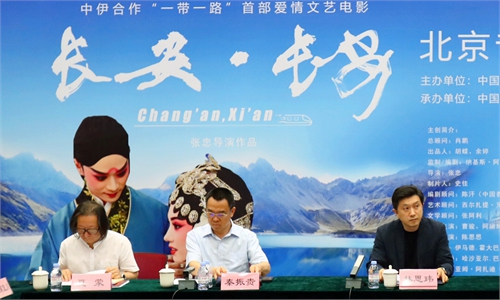ARTS / CULTURE & LEISURE
Veteran film production designer keeps searching cultural roots for innovation
Visualizing beauty on silver screen

A scene in the film Hero Photo: VCG
Huo Tingxiao's award-winning films are household names representing Chinese productions globally. As a film production designer, he has worked with many of the most renowned Chinese directors, with the combined box office of his films nearing 20 billion yuan ($2.75 billion). More importantly, his artistic creations have visualized Chinese culture for a global audience.
Having won five Golden Rooster Awards for production design, the top Chinese film award, Huo is the most decorated production designer in the country. With more than 30 years of career and numerous awards to his name, Huo told the Global Times that he has been dedicated to the artistic pursuit of "spreading the beauty of Chinese culture," which has been a key to the achievements.
Cinematic visual art
While the 1994 film Red Firecracker, Green Firecracker won him his first Golden Rooster Award, it was the 2002 film Hero, directed by Zhang Yimou, that has made his name overseas, with the unique colors representing each of the main characters, creating a highly stylized visual feast.
In recent years, Huo has participated in production of dozens of films, including the popular "neo-mainstream" films, covering a wide range of genres including realism and historic epics. Despite the variety of stories, Huo said producers can always find ways to fulfill the pursuit of spreading "beauty" in visual production design.
In a recent afternoon at a lush Beijing hutong courtyard, film admirers packed the venue to hear Huo's sharing of his insights on artistic production despite the sultry summer weather.
Huo shared insights into the creative process behind the scenic design of several ancient-themed films, highlighting the blend of historical accuracy and artistic imagination that defines his work. His innovative design concepts have contributed to the visual storytelling of some of China's most iconic movies.
When asked about his approach to designing sets for films like The Emperor and the Assassin, House of Flying Daggers, and Curse of the Golden Flower, Huo explained the nuanced process of integrating historical elements with creative liberties. He emphasized that while the initial inspiration for these designs comes from artifacts, paintings, and literature, the actual design process allows for a significant amount of creative freedom and imagination.
Huo highlighted the differences in world-building across films directed by Zhang Yimou and Chen Kaige, noting the distinct narrative and aesthetic choices that influence the design of each project. For instance, Zhang's Hero and Chen's The Emperor and the Assassin, though based on the same story, present contrasting approaches to realism and commercial cinema, respectively. This distinction extends to the setting of their films, with "House of Flying Daggers" and "Curse of the Golden Flower" both being set in the Tang Dynasty (618-907), showcasing vibrant and ostentatious colors and rich designs.
The art director's work on these films demonstrates a deep respect for historical accuracy while also pushing the boundaries of traditional set design. By carefully selecting and reimagining elements from the Tang Dynasty for House of Flying Daggers and Curse of the Golden Flower, Huo has created visually stunning environments that enhance the storytelling and bring the ancient world to life in a way that resonates with modern audiences.

Award-winning production designer Huo Tingxiao Photo: Li Qian/GT
Transforming film design
Huo's contribution to the film industry has not only set a high standard for historical set design but has also shown the importance of balancing factual representation with artistic innovation. His work continues to inspire a new generation of designers and filmmakers to explore the rich possibilities of combining history with imagination in their creative endeavors.
A makeup artist dresses up the characters, while production designers dress up the entire movie on silver screen, Huo said, which is why the work is important.
Huo shared that the expanse and richness of Chinese culture has been a limitless source of inspiration for him, and despite having achieved unparalleled recognition in the industry, he keeps studying traditional cultures and benefitting from them.
But once a style is decided upon, everything else keeps in line with the theme.
"A good film is one track-mind," he said, praising director Zhang Yimou of always making his stylization of a film to the extreme.
At an era when artificial intelligence is set to transform industries, Huo said movie production design work is also to be greatly changed by AI tools, "in three to five years." AI may reduce manpower costs in filmmaking, yet Huo maintains upbeat about this near future, as production-wise, "technology serves artistic creation" and helps handily visualize the imagination of designers, and there always needs humans to appraise and determine what's best for artistic expression.
Tools keep being revolutionised. Art designs for Chinese films only several decades ago used to be simple hand-drawn drafts, said one audience member, who was also a veteran member of the film industry, adding that they look forward to a more culturally charged future of artistic design with the help of AI.


